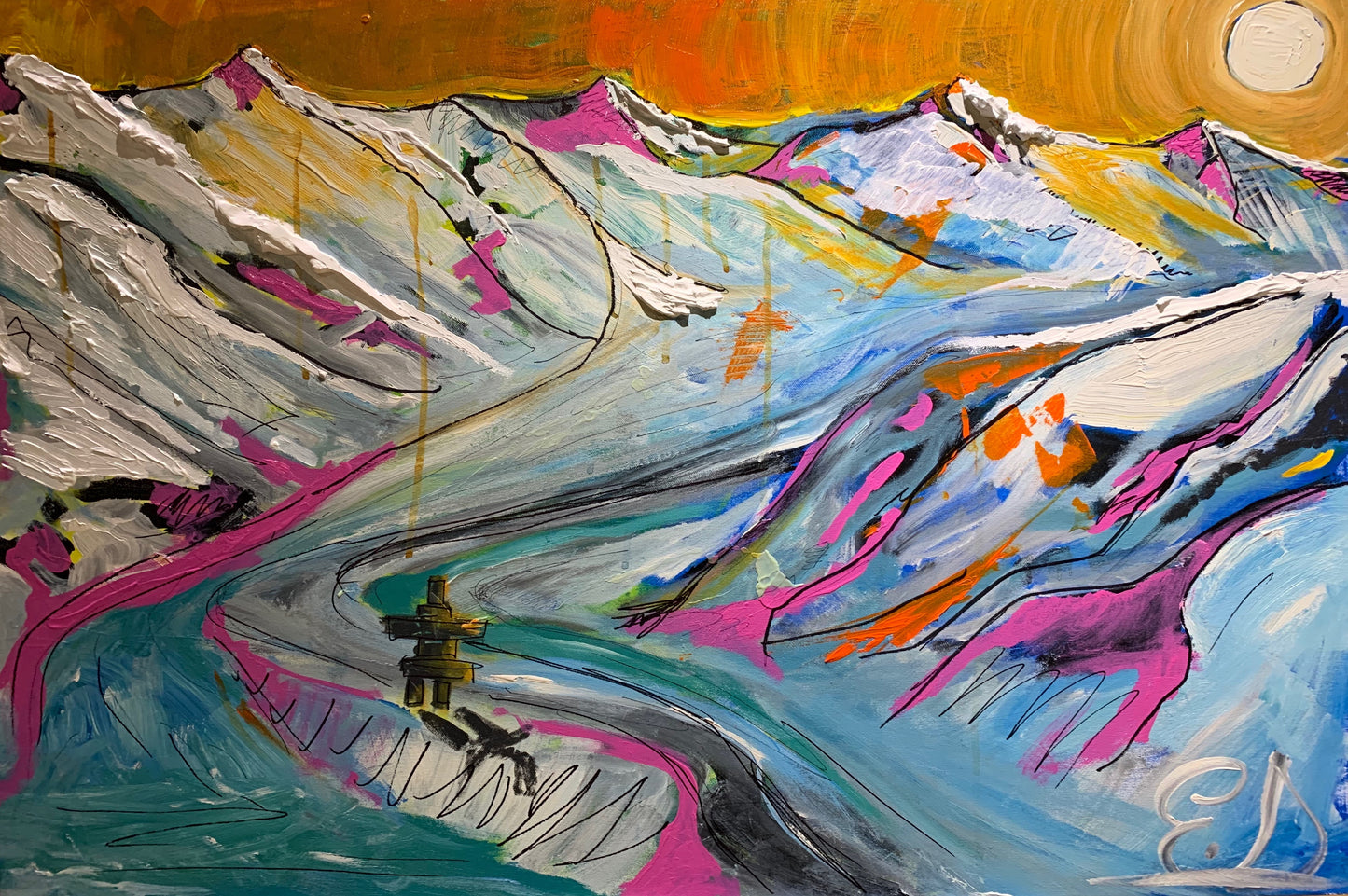Tears Are Not Enough is based on the effect that global warming is having on our glaciers and northern world. I have witnessed it myself while skiing the glaciers in Whistler and Zermatt, and it is only just beginning. Forest fires burn on the West Coast, hurricanes batter the East, and insect-borne illness rises in the centre of North America: global warming is already affecting many around the world.This piece aims to convey something bittersweet: the beauty and majesty of the being in the mountains mixed with the stark reminder that, with global warming, our North may not survive much longer. As ice floes and glaciers continue to melt, ocean temperatures will continue to rise, forever changing our aquatic ecosystems.
In the painting, I used bright oranges at the top of the mountain range to convey the melting heat that takes its toll, even in the presence of the moon. I created flowing rivers of pink to show that these are not typical rivers of spring run-off, but abnormal things with almost a “molten” feel. In certain spots, I used a thick white to mark the threat of avalanches that can occur when temperatures rise like this. I made the decision to allow the paints to drip in order to show that the mountains weep, but their tears have not been enough to stop man from destroying the planet. The fluorescent colours remind us that the melt continues, even in the darkness. They are the ghosts of what once was, as global warming continues.
An Inukshuk stands at the base of the mountain. It is meant as a symbol of hope, a reminder that even at this late date, global warming can still be overcome. This can happen if we pay attention to the philosophy of indigenous cultures: living in balance with our earth. But even the Inukshuk wears a shadow. Time is running out. Its shadow is cast in a different light, to show that, if we do not act soon, our earth’s light may be snuffed out and we may need to turn to a new light, one beyond our planet.

